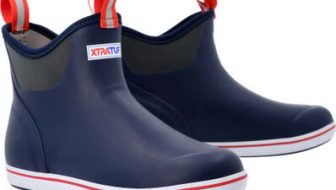A ski partner of mine always “carbo loads” with gas station “Bearclaw” pastries before tours. His idea of a recovery drink is a post-ski PBR. I, on the other hand, have been caught weighing protein powder on a gram-precise scale. The former seems less than ideal, and the later, inconvenient. But just what should we eat—before, during and after—to log another lap or two?
Sifting through volumes of sports nutrition journals requires patience and, in some cases, a PhD. So to speed up that process, I let the doctors do the work—and pulled some collective wisdom from their review papers.
Whether you’re ripped or, um, less ripped, burning fat drives you up the skintrack. Fat stores are best utilized when you’re hiking at about half of maximum effort, but there’s more that you can do. Gonzalez and Stevenson1 point out that lowering the glycemic index (how much a food raises your blood glucose) of your pre-exercise meal can boost fat burning by 100 percent. On a scale where glucose equals 100, white bread ranks in the 70s while oatmeal scores a 55. Mmmm, oatmeal with blueberries for breakfast. Adding protein can lower a meal’s glycemic index, too, so bacon is never a bad choice.
Everyone knows that gobbling carbohydrates during long days helps you avoid bonking. Traditionally, 30-60g/hr is recommended. Most energy bars fall within this range. But if you view the skintrack as a race course, boost that to 90g/hr by ingesting different types of carbohydrates—60g/hr glucose plus 30g/hr fructose.2 Once the glucose is burned, your body will tap into the added fructose. Dried fruits or honey are a good bet.
Protein during exercise? The results are mixed. But, Stearns et al. compiled studies that showed no detriment to and, in some cases, a slight improvement in performance with 10-20g of protein per hour during exercise.3
For recovery, recent research has questioned the necessity of protein. Two extensive reviews, however, support that protein plus carbs does speed recovery, aiding muscle protein re-synthesis.4,5 Consuming the meal within a couple hours of exercise improves recovery, and, in many studies, whey-derived protein was the favorite. Sounds like my standard recovery meal of peanut butter generously slathered on whole wheat bread and chased by a pint of low-fat milk satisfies the need. Funny, though—none of these studies mentioned the beneficial effects that a tailgate beer has on recovery….
1) Gonzalez, Javier T. and Stevenson, Emma J. (2012) New perspectives on nutritional interventions to augment lipid utilisation during exercise, British Journal of Nutrition, 107, 339–349.
2) Jeukendrup, Asker E. (2013) Multiple Transportable Carbohydrates and Their Benefits, Sports Science Exchange, 108, 1-5.
3) Stearns, Rebecca L., Emmanuel, Holly, Volek, Jeff S., and Casa, Douglas J. (2010) Effects of Ingesting Protein in Combination with Carbohydrate During Exercise on Endurance Performance: A Systematic Review with Meta-Analysis, The Journal of Strength and Conditioning Research, 24, 2192-2202.
4) Pritchett, Kelly L., Pritchett, Robert C., and Bishop, Philip (2011) Nutritional Strategies for Post-Exercise Recovery: a Review, South African Journal of Sports Medicine, 23:1, 20-25.
5) Aragon, Alan A. and Schoenfeld, Brad J., (2013) Nutrient Timing Revisited: Is there a Post-Exercise Anabolic Window?, Journal of the International Society of Sports Nutrition, 10:5, 1-11.
Beyond the Nuts
It’s 2013…GORP Sucks
 Skratch Labs Hydration Mix
Skratch Labs Hydration Mix
$20 (one-pound bag)
skratchlabs.com
Boulder, Colo.-based Skratch Labs has been making hydration mixes for professional cyclists for years based on the belief that we should be consuming real food during exercise. Their Apples + Cinnamon hydration mix is meant to be served hot, and actually lists apples and cinnamon among its 10 ingredients (unprecedented).
Tailwind Nutrition Endurance Fuel
$35 (three-pound bag)
tailwindnutrition.com
Tailwind boasts the tagline “All you need, all day. Really.” That’s because their drink mixes are designed to nix the need for consuming food during activity. Each serving of powder measures 100 calories, so two or three in a bottle is the energetic equivalent of a bar or two. Organic lemon is our favorite flavor.
Garuka Bars
$36 (12-pack)
garukabars.com
Vermont-made Garuka Bars are packed with raw Vermont honey, peanut butter, dried cranberries and just a handful of other whole ingredients. Each bar is super high in carbohydrates (41g) and has a soft, gooey texture. Plus the honey keeps these bars from freezing solid in the winter.
Health Warrior Chia Bar
$20 (15-pack)
healthwarrior.com
Chia seeds are all the rage, just like the pets were when I was a kid. Known for their high antioxidants, fiber and omega-3 fatty acids, the seeds (not the pet) are the primary ingredient to Health Warrior’s sticky and sweet Chia Bars. The Post-it Note size bars are packed with organic ingredients and taste like a fruity snack, but the tiny seeds tend to get stuck between your teeth.
—
This story first appeared in the November 2013 issue of Backcountry Magazine.









Related posts: